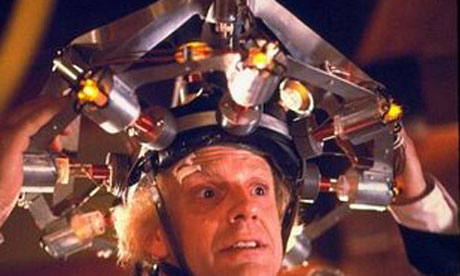This could be you! |
Above all this is a fire sprinkler. Not at all reassuring.
Last year I went to an eye surgeon who was introducing digital records to his practice. As I watched from the chair, he and his assistant labored at a laptop to enter my data into the many fields of my record.
Right there we see the problems. There's not a lot of money lying around in family practices. Given the absence of standards, why should my doctor invest in something that may be outdated next year? And given all the upcoming changes in the government's role, how could anyone make a rational decision? And as my eye surgeon demonstrated, it's not as simple as it seems.
Digitalization makes a lot of sense. Each year there are tens of thousands of phone calls from pharmacists to physicians to clarify prescriptions. I've experience this. Throw out the little paper pads, type it into a gizmo hanging on your belt and off it goes to the pharmacy. Plus, the gizmo could warn both about drug interactions and the like.
The government has got it in its head (oxymoron alert!) that it's going to push everyone to a digital world.
In the 2009 economic recovery package, the administration and Congress allocated billions — the current estimate is $27 billion — in incentives for doctors and hospitals to adopt electronic records.
Late last year, the administration, working with health professionals and the technology industry, set out a roadmap for what digital records should include and how they should be used, for doctors to qualify for incentive payments, typically up to $44,000. The program begins this year, and the requirements for using the records to report and share health information increase in stages through 2015. After that, penalty payments from Medicare and Medicaid kick in for doctors who don’t meet the use and reporting rules.
Carrot and stick. We'll see how that works out.







